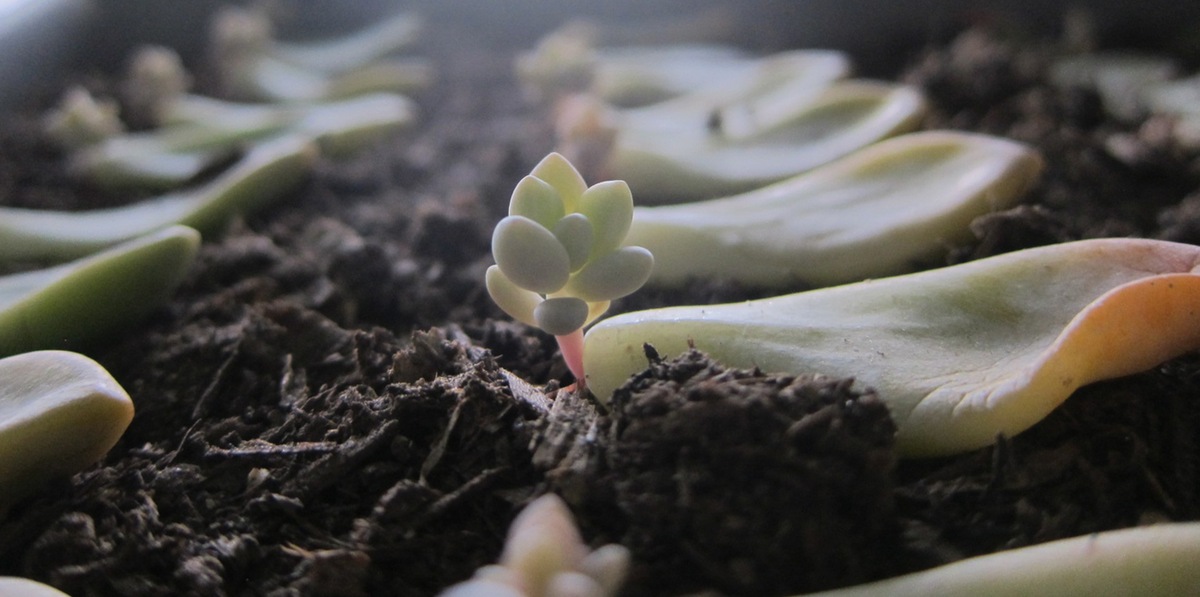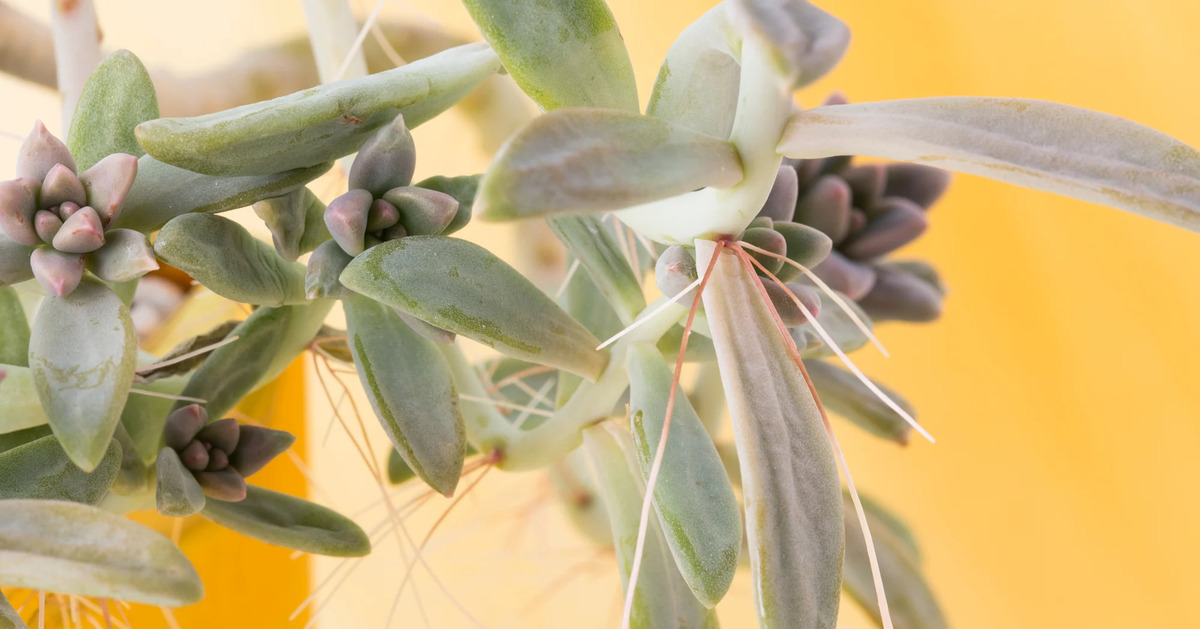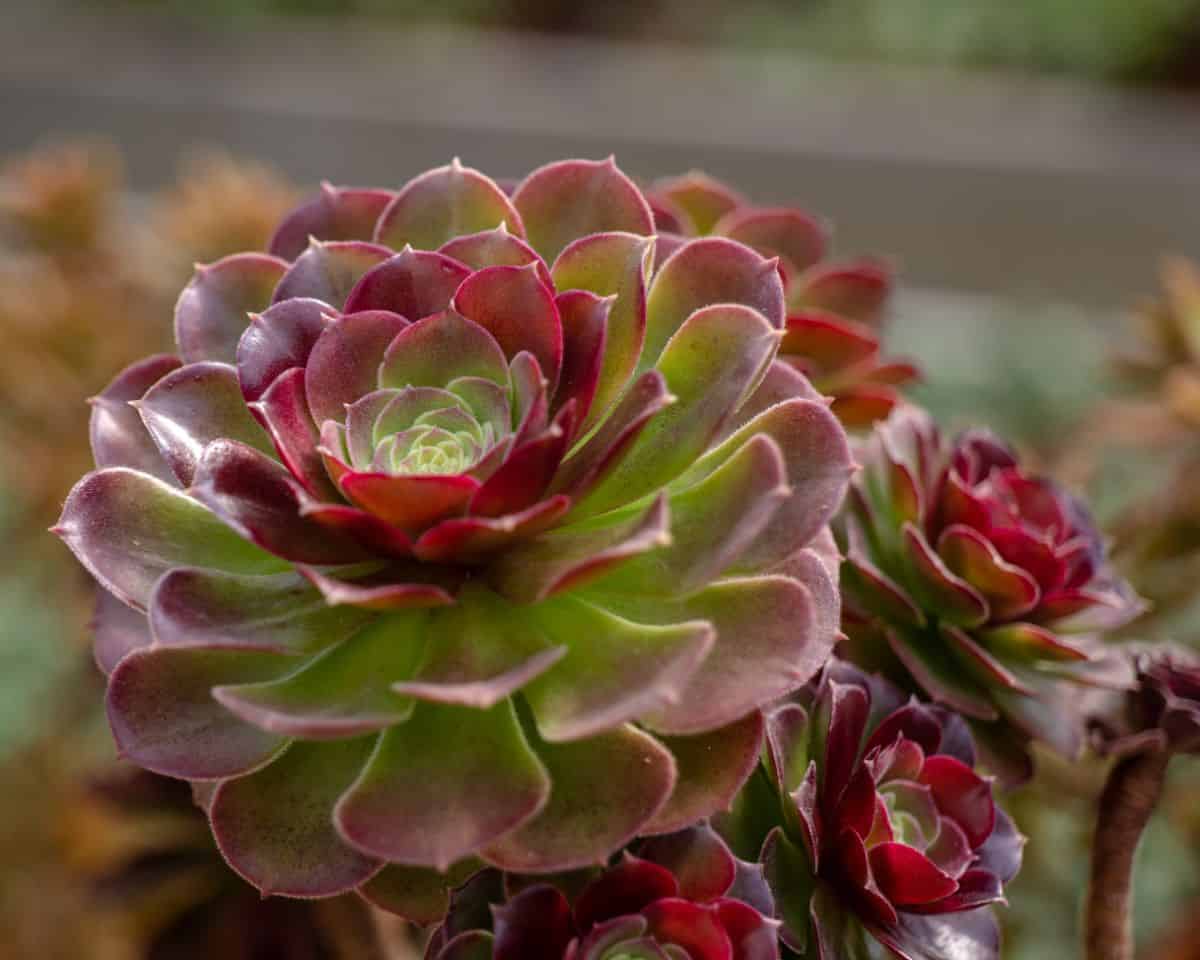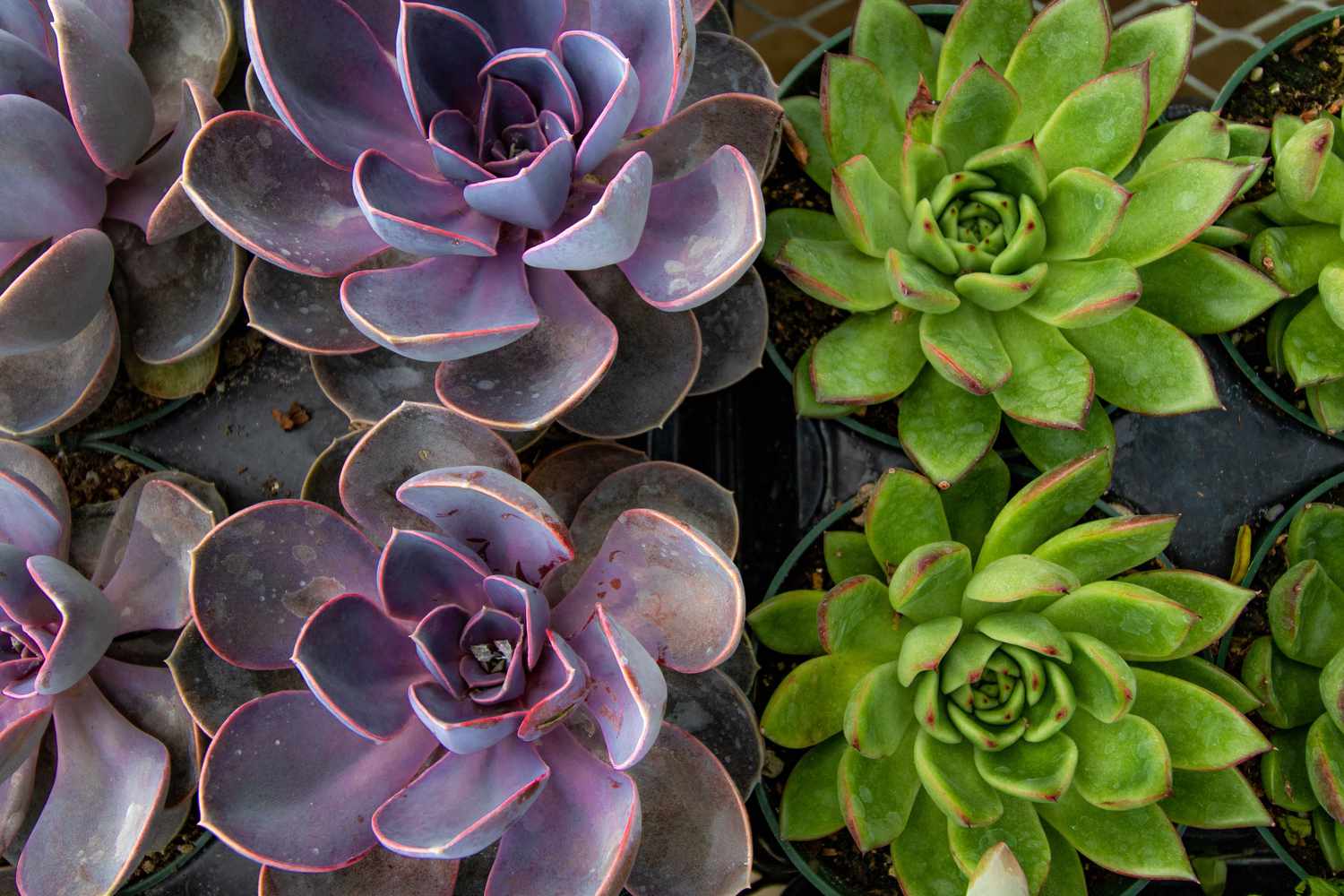Home>Types of Gardening>Ornamental Gardening>When Do Succulents Flower
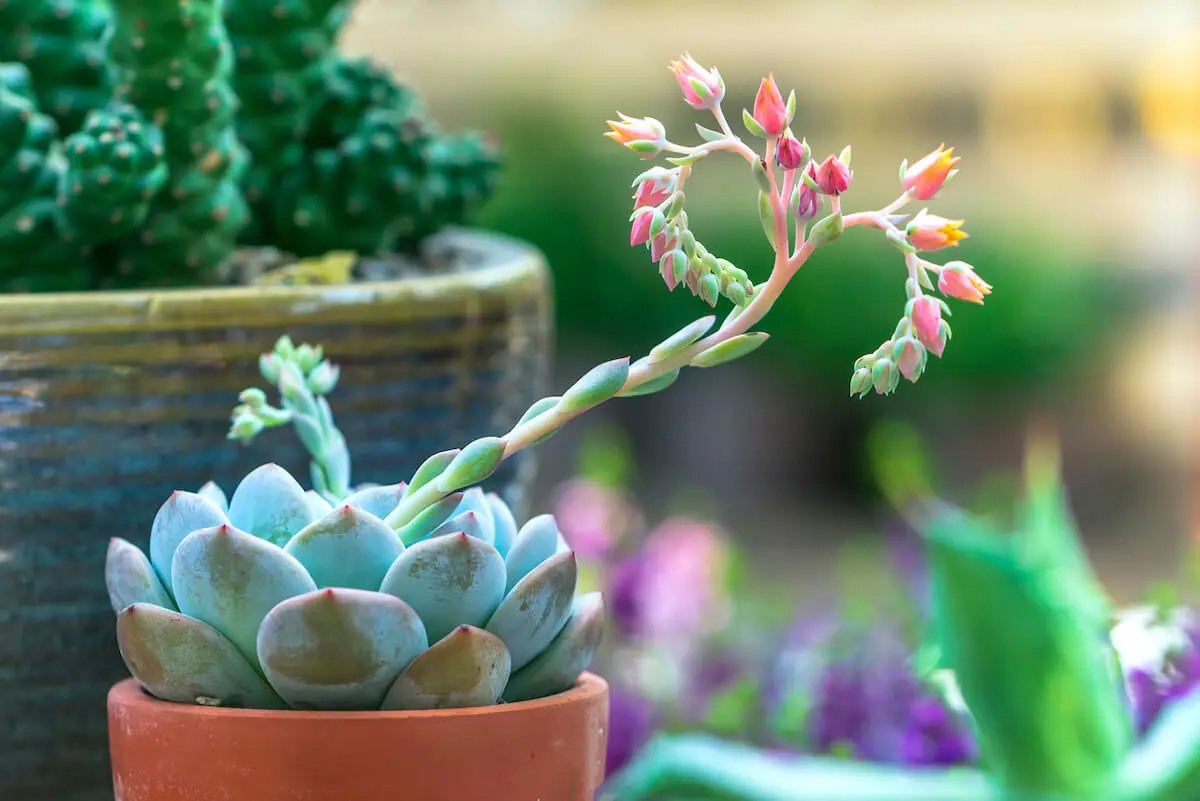

Ornamental Gardening
When Do Succulents Flower
Published: December 24, 2023
Discover when succulents flower in your ornamental gardening journey. Find out the best times to enjoy these beautiful blooms and enhance your garden's aesthetic.
(Many of the links in this article redirect to a specific reviewed product. Your purchase of these products through affiliate links helps to generate commission for Chicagolandgardening.com, at no extra cost. Learn more)
Table of Contents
Introduction
Succulents are a popular choice among gardeners and plant enthusiasts due to their unique and striking appearance. Their fleshy leaves and ability to store water make them well-suited for arid environments. While succulents are known for their resilience and low-maintenance nature, one aspect that captivates many enthusiasts is their ability to produce beautiful and vibrant flowers.
When do succulents flower? This question often arises among gardening enthusiasts, as the timing and conditions for succulent flowering are influenced by various factors. Understanding these factors and how to encourage flowering in succulents can be both fascinating and rewarding.
Factors such as species, age, and overall health of succulents play a crucial role in determining their flowering capabilities. Additionally, environmental conditions, including sunlight exposure, temperature, and even the length of the day, can influence the flowering cycle of succulents. By understanding these factors and making certain adjustments, gardeners can maximize the blooming potential of their succulents.
In this article, we will delve into the factors that affect succulent flowering, explore the optimal environmental conditions for encouraging blooming, discuss the seasonal patterns of succulent flowering, highlight some common succulents and their respective flowering periods, and provide techniques to help gardeners stimulate and enhance succulent flowering.
Whether you are a seasoned succulent enthusiast or just starting your journey into the world of ornamental gardening, this article will provide valuable insights into the fascinating realm of succulent flowering. Let us unlock the secrets of when and how succulents burst into mesmerizing blooms!
Factors Affecting Succulent Flowering
Several factors can influence the flowering capabilities of succulents. Understanding these factors can help gardeners create optimal conditions for promoting blooming. Here are some key factors to consider:
- Species: Different succulent species have varying flowering habits. Some species are known to flower more readily, while others require specific conditions or reach a certain age before initiating blooming.
- Age: Succulents often need to reach a certain maturity level before they are capable of producing flowers. Younger plants may focus on growth and development rather than flowering.
- Health: The overall health and vitality of a succulent are important factors in determining its ability to flower. Succulents that are stressed or in poor health may redirect their energy towards survival rather than reproduction.
- Light Exposure: The amount and intensity of sunlight that succulents receive can significantly impact their flowering. Most succulents thrive in bright, indirect light. Insufficient light can inhibit blooming, while excessive direct sunlight can cause heat stress and hinder flowering.
- Temperature: Succulents have varying temperature preferences. While some species can tolerate a wide range of temperatures, others require specific temperature conditions to trigger flowering. Generally, a balance between warm days and cool nights can encourage blooming.
- Watering: Succulents, by nature, are adapted to drought-like conditions and have the ability to store water in their leaves. Overwatering can lead to root rot and prevent proper flowering. Finding the right balance in watering frequency is crucial.
- Nutrition: Providing adequate nutrients, particularly phosphorus and potassium, can promote flowering in succulents. Using a well-balanced fertilizer or incorporating organic matter into the soil can help nourish the plants and support blooming.
By taking these factors into account and making appropriate adjustments, such as selecting suitable species, providing optimal light and temperature conditions, and meeting the succulent’s water and nutrient requirements, gardeners can greatly enhance the chances of successful succulent flowering.
Environmental Conditions for Succulent Flowering
The environmental conditions in which succulents are grown have a significant impact on their blooming capabilities. Understanding and providing the optimal conditions can greatly encourage succulent flowering. Here are the key environmental factors to consider:
- Sunlight: Most succulents thrive in bright, indirect light. They require several hours of sunlight each day to trigger blooming. Place your succulents in a location with ample sunlight, such as a south-facing window or a well-lit spot in your garden.
- Temperature: Succulents have specific temperature preferences for optimal flowering. Generally, they prefer a balance of warm days and cool nights. Mild to warm temperatures, typically ranging from 65°F to 85°F (18°C to 29°C) during the day and cooler temperatures at night, can help stimulate blooming.
- Day Length: Some succulents are sensitive to the length of daylight hours. They require a specific day length to initiate flowering. For example, certain species may require shorter days in autumn to trigger blooming. Adjusting the lighting in indoor settings or planting at the right time can help meet the specific day length requirements.
- Air Circulation: Good air circulation is important for succulent health and flowering. Stagnant air can lead to fungal diseases, which can inhibit blooming. Ensure proper ventilation and avoid crowding succulents together, especially in humid environments.
- Humidity: Succulents are adapted to low-humidity environments and can be sensitive to excessive moisture. High humidity levels can hinder flowering and increase the risk of fungal infections. Maintain moderate humidity levels by providing proper ventilation and avoiding overwatering.
Creating suitable environmental conditions and replicating the natural habitat of succulents can greatly contribute to their flowering success. By maximizing sunlight exposure, providing optimal temperature and day length, ensuring proper air circulation, and maintaining moderate humidity levels, you can create an environment that promotes blooming.
Seasonal Blooming of Succulents
Succulents, like many other plants, often exhibit seasonal blooming patterns. Understanding the natural blooming periods of different succulent species can help you plan and anticipate when to expect a burst of vibrant flowers in your garden. Here are some common seasonal blooming patterns among succulents:
- Spring Blooming: Spring is a popular season for succulent flowering. Many species, like Echeveria, Sedum, and Crassula, begin to produce colorful blooms during this time. The longer daylight hours and mild temperatures provide favorable conditions for initiating and sustaining blooming.
- Summer Blooming: In summer, succulents such as Kalanchoe and Aloe vera often showcase their blossoms. The combination of warm temperatures and abundant sunlight encourages these plants to produce vibrant, eye-catching flowers. The summer blooming period can extend into early fall.
- Fall Blooming: While not as common as spring or summer, some succulents, like some species of Sempervivum and Agave, exhibit fall blooming. These plants take advantage of the cooler temperatures and shorter days of autumn to produce their flowers.
- Winter Blooming: Surprisingly, certain succulent species, such as Christmas Cactus (Schlumbergera) and certain types of Sedum, showcase their blossoms during the winter months. These winter-blooming succulents add a delightful burst of color and freshness to the often bleak winter landscape.
It is important to note that blooming periods can vary depending on the climate and growing conditions. In some regions, succulents may bloom earlier or later than expected due to local temperature and daylight fluctuations. Additionally, individual plant health, species variations, and other factors can affect the timing and duration of flowering.
By researching and selecting succulents that naturally bloom during specific seasons, you can create a garden that offers continuous and diverse flowering displays throughout the year. Mixing various species with different blooming periods allows you to enjoy the beauty of succulent flowers from spring to winter.
Common Succulents and Their Flowering Periods
Succulents come in a wide variety of species, and each species has its own unique flowering habits and periods. Here are some common succulents and their respective flowering periods to give you an idea of when to expect blooms:
- Echeveria: Echeveria is a popular succulent genus known for its rosette-shaped leaves and stunning flower spikes. Many Echeveria species bloom in the spring and early summer, producing vibrant flowers in shades of pink, coral, yellow, or orange.
- Sedum: Sedums are versatile succulents that can thrive in a variety of conditions. Different Sedum species bloom at various times, but many produce their colorful flowers in late spring and summer. The flowers range in color from white and pink to deep red and attract pollinators like bees and butterflies.
- Kalanchoe: Kalanchoe plants are known for their fleshy leaves and clusters of small, tubular flowers. They typically bloom in late winter to early spring, adorning the garden with shades of red, pink, orange, or yellow. Kalanchoe blossoms can last for several weeks.
- Aloe: Aloe vera, one of the most well-known succulent species, produces tall flower spikes with tubular orange or yellow flowers. Aloe vera typically blooms in the summer, attracting hummingbirds and other pollinators to its nectar-rich blossoms.
- Crassula: Crassula, often referred to as Jade plants, are popular for their plump leaves and easy care. Many Crassula species bloom in late winter to early spring, displaying clusters of small, star-shaped flowers in shades of white or pink.
- Sempervivum: Sempervivum, also known as Hens and Chicks, is a cold-hardy succulent that forms rosette-shaped clusters. While they primarily focus on producing new rosettes, some Sempervivum species offer delicate flowers in early summer.
Keep in mind that flowering periods can vary even within species, depending on growing conditions and individual plant health. Observing your succulents closely and noting their unique blooming patterns will provide you with valuable insights into their specific flowering periods.
By selecting a diverse range of succulent species that bloom during different seasons, you can create a vibrant and constantly changing display of flowers in your garden. With careful planning and attention to each succulent’s flowering period, you can enjoy a year-round spectacle of colorful blooms.
Techniques to Encourage Succulent Flowering
While succulents have their own natural flowering cycles, there are several techniques you can employ to encourage blooming and maximize the display of vibrant flowers. Here are some strategies to promote succulent flowering:
- Provide Adequate Sunlight: Ensure your succulents receive sufficient sunlight exposure, ideally 6 to 8 hours of bright, indirect light per day. Place them in a location with optimal sunlight, such as a south-facing window or an outdoor spot with partial shade.
- Optimize Temperature: Maintain temperatures within the preferred range for your succulent species. Most succulents flower best when daytime temperatures are warm, between 65°F and 85°F (18°C and 29°C), and nights are cooler.
- Adjust Watering Habits: Succulents prefer infrequent but deep watering, allowing the soil to dry out between waterings. Avoid overwatering, as it can lead to root rot and hinder flowering. Monitor the moisture level in the soil and adjust your watering schedule accordingly.
- Use a Well-Draining Soil Mix: Ensure that your succulents are planted in a well-draining soil mix. This allows excess water to pass through the soil, preventing waterlogged roots that can inhibit flowering. Consider adding coarse sand or perlite to improve drainage.
- Fertilize Appropriately: Apply a balanced fertilizer specifically formulated for succulents during the active growing season. Look for a fertilizer with a higher phosphorus content to promote flowering. Follow the instructions on the product label for proper application.
- Control Day Length: Some succulents require specific day lengths to initiate flowering. If growing indoors, adjust the lighting to mimic the natural day length required for blooming. Use artificial lights or adjust the duration of natural light exposure accordingly.
- Prune and Remove Spent Flowers: Regularly prune your succulents by removing dead or dying foliage. Additionally, pinch off spent flowers to redirect the plant’s energy towards producing new blooms. This also helps maintain the aesthetic appeal of the plant.
By applying these techniques consistently and observing your succulents closely, you can create an environment that encourages prolific blooming. Remember that each succulent species may have unique requirements, so it’s essential to research the specific needs of your succulents to optimize flowering.
With patience, care, and attention to their growing conditions, you can enjoy a stunning array of colorful and captivating flowers from your succulents.
Conclusion
The world of succulents is a captivating one, and their ability to produce beautiful flowers adds an extra layer of charm to these already fascinating plants. By understanding the factors that influence succulent flowering, creating optimal environmental conditions, observing the seasonal blooming patterns of different species, and employing techniques to encourage blooming, you can enhance the vibrancy and diversity of your succulent garden.
From spring to winter, each season brings a unique set of succulents that burst into bloom, showcasing a myriad of colors and forms. By selecting a variety of species with different flowering periods, you can create a garden that offers a continuous spectacle of flowers throughout the year.
Remember to consider the specific needs of each succulent species, such as light exposure, temperature requirements, watering practices, and day length sensitivity. By catering to these needs and making necessary adjustments, you can create an environment that promotes optimal flowering.
Whether you’re an experienced succulent enthusiast or just starting your journey into ornamental gardening, the world of succulent flowers is waiting to be explored. Embrace the beauty and uniqueness of each succulent variety, and with patience, you will be rewarded with stunning displays of nature’s artistry.
So, why wait? Delve into the realm of succulent flowering, experiment with different species, and witness the dazzling transformation as your garden becomes a haven of vibrant and blooming succulents!
